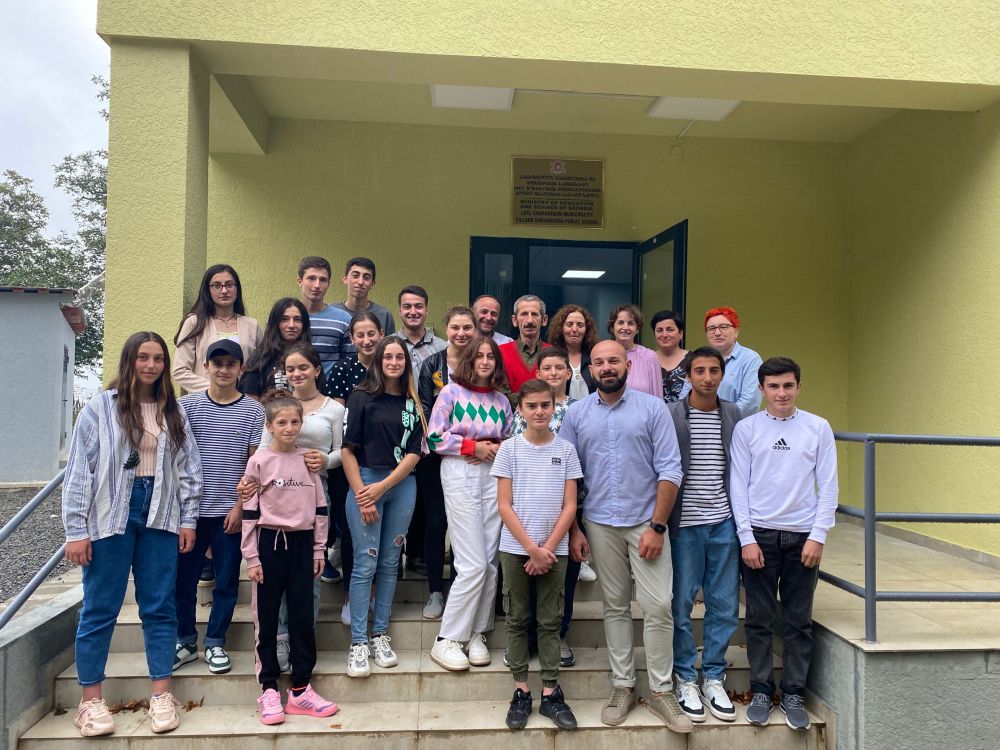MEDIA

International Consulting Company SLR UK Office Begins Study of Biodiversity on the Territory of Bakhvi 1 HPP Project Territory
The CCEH Hydro VI company management has concluded an agreement with SLR, an international consulting company. SLR Consulting, an international group, is an environmental consultancy company with up to 1,600 consultants in its United Kingdom, France, Ireland, United States, Canada, Australia and South Africa offices (https://www.slrconsulting.com/). SLR Consulting UK Office is a member of the international consulting group.
Based on the agreement signed by CCEH Hydro VI and SLR, the international company's leading consultant, Nicola Faulks, will lead a biodiversity study on the Bakhvi 1 Small HPP project territory. Through the biodiversity study, the following research areas are highlighted: water species, mammals, avian species, amphibians and reptiles, bats, flora, fungi, and forest cover. An integral part of biodiversity impact study is development of relevant mitigating measures, as well as preparation of the biodiversity action plan and critical habitats study.
Nicola Faulks visited Georgia and explored the Bakhvi 1 HPP project territory. Here is the interview we recorded with Nicola when she visited Georgia.
Q: What are areas of competence and work experience of SLR?
Faulks: Some 1,600 professionals work with SLR, an international consulting company. At the moment, we work on many projects in different parts of the world, including Georgia. We regularly plan and implement environmental impact assessment studies, based on which we write for project implementers biodiversity and other significant species assessment reports, as well as biodiversity actions plans.
Q: What kind of studies are you conducting for the Bakhvi 1 HPP project?
Faulks: For the Bakhvi 1 HPP we do a comprehensive well-grounded research to identify what type of biodiversity we have in the given area. Within the study, we research water biodiversity species, mammals, avian species, reptiles and amphibians; we also research flora, fungi, and forest cover. We have already deployed camera traps in the project area and hope to capture relevant data. As you see, we are carrying out a large scale study for the Bakhvi 1 HPP project, which includes vegetation cover; for that, we are covering the entire project territory.
Q: What methodology do you use in the study process?
Faulks: The methodology we use is based on international standards and is recognized by the IFC and IUCN. In the study process we mark examined areas and collect data seasonally. The basic data is most important as this data gives the most valuable information when we work on development of the environmental impact assessment report. When we work on critical habitat study we rely on IFC developed guidelines. These two studies combined enable us to prepare the environmental impact assessment document. We closely collaborate with the project implementers, have information on how the project is planned, what activities are intended in particular zones, and where is the main project area. With this type of study, we have a full picture and the environmental impact assessment document is going to be realistic and informative. The goal of the document we are preparing is to see what impact the project will have on the environment. Based on collected data, through the study, the relevant mitigating measures are planned; this implies a certain hierarchy starting with impact avoidance, then its reduction, and ending with impact mitigating measures implementation. The goal of complying with this hierarchy is solely to attain the best possible results in terms of environment management through the efficient mitigating measures.
like




